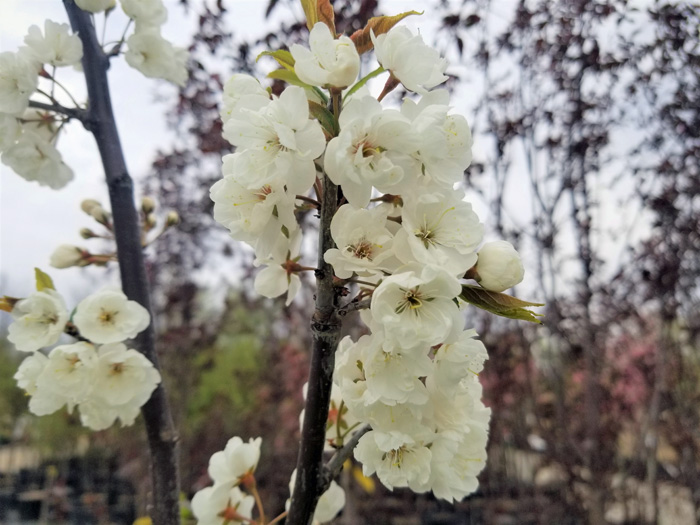It’s small wonder they call this one a princess. This small ornamental has many positive attributes that make it a true princess. First a little history. Discovered in the wilds of Itasca Park – Northern Minnesota, this tree was released from the University of Minnesota in 1986. We hadn’t heard about it until about 10 years ago. In Nursery language this is a relatively new tree. I tried to research the name, assuming Princess Kay was somebody of royalty. Turns out the only thing I could dig up was that “Princess Kay of the Milky Way” is the award winner of a Statewide Minnesota Dairy program. An annual competition for the Midwest Dairy Association. I assume that given milk is white, the tree blooms White… there came the marketing connection.
Every tree must be tested before release. Does it have good structure? Can we propagate it properly? Does it have good disease resistance? And then when all is said and done does it actually have sales appeal. Let’s tackle that first, it’s got plenty of sales appeal. Prunus nigra or Canadian plum has a large native range right into Manitoba. The difference between Princess Kay and the common native trees we see here is that it has a double petal White bloom. This means it has twice as many petals as a normal Canada Plum flower. On close inspection it is quite beautiful. The flowers are approximately three quarter inch across and the tree is covered in them. They last about a week to 10 days in spring. The branching structure is more upright in forum and not sprawling as some tend to be. Maturing at 12ft to 15ft and only 10ft wide, it can fit into many locations. A small backyard, or even near the house where the small roots will not be a problem. Another positive attribute is that this Plum is not grown for fruit production. Though it is edible and tasty it produces only about 20% of what a regular plum tree does. The fruits are about an inch and a quarter to an inch and a half long, oblong, and red yellow when ripe. Clean up is easy or you can use the fruit for fresh eating, Jam or wine. Another key feature of this tree is the orange red fall colour. This show usually last between a week or two. The bark is also a shiny gun barrel gray which in itself is interesting. So, in summary this tree has a magnificent spring bloom oh, good fall colour, good structure, low-maintenance, it is native, cold Hardy and soil tolerant. Possible weaknesses would be, depending on what it is grafted to, it may sucker a little. It does not like soggy spots although it is drought tolerant once established. It also blooms a good week earlier than the flowering crabs. This is great because it extends your spring Bloom season. Anyone visiting a milder climate could very easily mistaken this tree for the more exotic Japanese cherries so famous for their blossoms. Once this tree becomes more noticed, it could go plum crazy!




